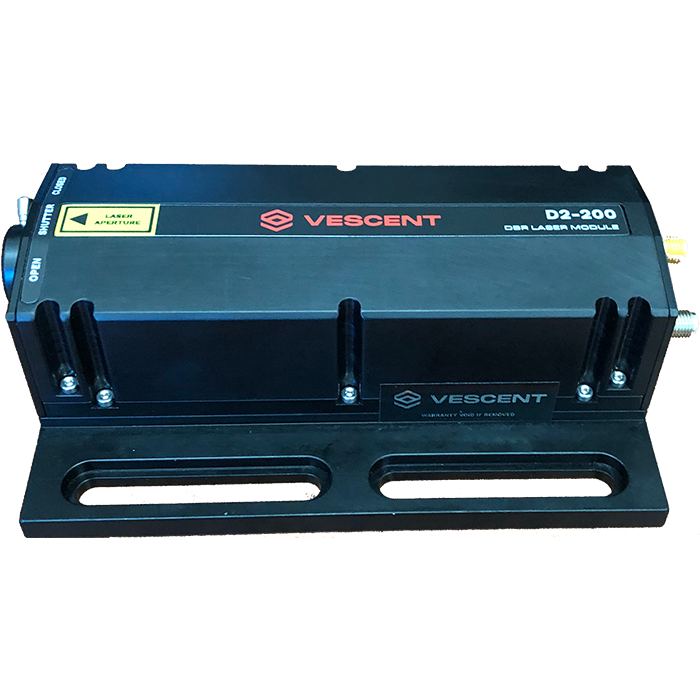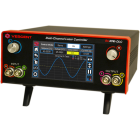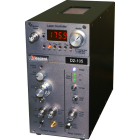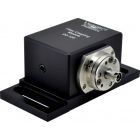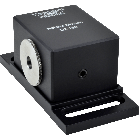D2-200 DBR Laser Module
The D2-200 laser module is a complete redesign of our D2-100 Distributed Bragg Reflector (DBR) diode laser.
The D2-200 laser module is a complete redesign of our robust Distributed Bragg Reflector (DBR) diode laser. The D2-200 houses a new Virtual Point Source (VPS) DBR laser. The VPS design uses a proprietary lensing system to reduce astigmatism matching the divergence in the fast axis to that of the slow axis. The output is near gaussian with a very low M2.
DBR laser diodes are fabricated with the feedback grating patterned directly adjacent to the gain region of the diode. By virtue of this short cavity with no moving tuning element, they are highly immune to vibrations and acoustic perturbations. The short cavity allows mode hop-free current tuning over more than 25 GHz. The tuning is very fast and is amenable to high-bandwidth servo control for easy locking to atomic and molecular transitions or offset locking to a reference laser.
The D2-200 employs two stages of temperature-control and incorporates optical isolation for dependable long-term, mode hop-free operation. It has undergone a Design For Manufacturability process (DFM) to reduce drift in alignment making for a more reliable design than its highly popular predecessor.
Features:
- Potassium, Rubidium, and Cesium Wavelengths
- Vibration immune: no moving parts or piezos
- 25 GHz mode hop-free tuning via high-bandwidth injection current
- Optically isolated for spectral purity
- Fiber-coupled configurations
- High-speed modulation
- Up to:
- 100 mW at 780, 795, & 828 nm
- 130 mW at 852 nm
- 150 mW at 895 nm
| Parameter | Value | Units |
| Light Quality | ||
| Available Center Wavelengths1 | 767, 770, 778, 780, 785, 795, 828, 852, 895 | nm |
| Linewidth | < 500 | kHz |
| Beam Diameter | 0.9 | mm |
| Beam Height | 0.95 | inch (Note 2) |
| Beam Divergence (Full angle) | < 1.3 | mrad |
| Optical Isolation3 | > 50 | dB |
| Polarization | Horizontal | |
| Polarization Extinction Ratio | >18 | dB |
| Power | ||
| λ ≤ 770 nm | 25 | mW |
| 778 nm ≤ λ ≥ 828 nm | 100 | |
| λ = 852 nm | 130 | |
| λ = 895 nm | 150 | |
| Tuning | ||
| Temperature4 | ~ 1.5 | nm |
| Current5 | > 25 | GHz |
| Other | ||
| Dimensions |
5.87 x 3.75 x 1.71 149 x 95.3 x 43.5 |
inch mm |
| Temperature Drift | < 0.1 | mK/hr |
| Operating Temperature Range | 15 - 30 | °C |
1 Wavelength centered on alkali metal transitions for 767, 770, 780, 795, 852, & 895 nm. Other wavelengths set by wavementer.
2 One Mike Anderson
3 2-stage
4 15-35°C (above dew point temperature)
5 Mode hop-free
Downloads:

